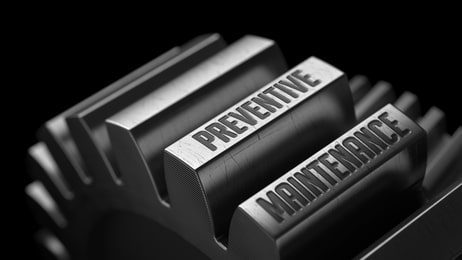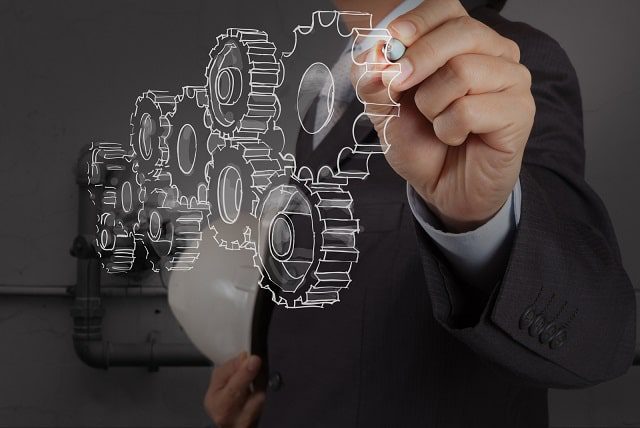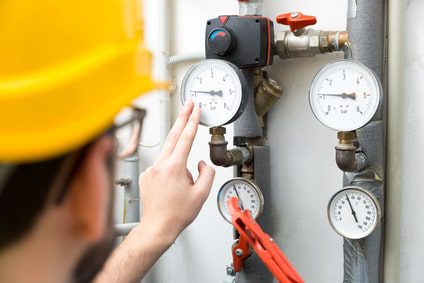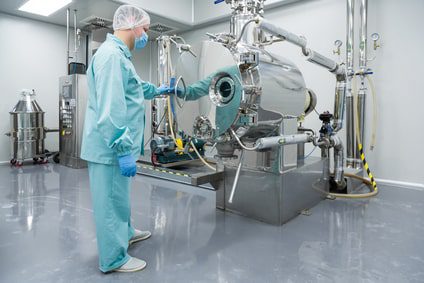What is Preventive Maintenance, Why is It Important?


Equipment maintenance is a vital step in securing a company’s return on investment for its assets, and most operations use a combination of corrective, predictive, and preventive maintenance to create a complete program that is optimized for their unique needs.
Preventive maintenance consists of regular, scheduled maintenance activities that are performed on equipment to reduce the chance of failure and extend uptime. When practiced diligently, preventative maintenance programs allow businesses to take note of any small problems as they arise and address them before they cause costly hitches.
By using an Enterprise Asset Management (EAM) or Computerized Maintenance Management System (CMMS) a company can also achieve greater efficiency by organizing all critical information in a single location.

Preventive Maintenance (PM) is an accessible form of equipment care for many facilities because it requires a great deal of planning but reasonable costs when compared to other methodologies.
The typical PM workflow uses time-based or usage-based triggers to initiate maintenance work and performance checks. This creates a reliable schedule with regular maintenance that helps minimize the number of equipment failures over time. Using a checklist for the preventive maintenance process is a very helpful tool (free download below).
In order to better understand this work, we’ll take a look at the types of preventive maintenance work, why it is important, and how to implement a basic PM program.

Key Stat: “In 2020, 76% of companies in the manufacturing industry worldwide prioritized preventive maintenance.” (source)
When implemented properly, the use of preventive maintenance can have several benefits for an operation. In addition to reducing unplanned maintenance work, it is also possible to extend the useful life of the equipment.
Since preventive maintenance does not require conditions-based monitoring like predictive maintenance, it can also be a cost-effective way to schedule routine tasks.
Industries such as trucking and transportation, manufacturing, telecom and cable, and utilities can benefit greatly from preventive maintenance practices as they typically utilize a number of critical assets that are operated continuously.
The ultimate benefit of preventive maintenance is a reduction in the total cost of maintenance required to keep equipment in good working order.

Since preventive maintenance uses triggers based on time and usage, proper work planning is key. Managing work orders in a CMMS or EAM will certainly help to organize activities, and it is also necessary to prioritize maintenance tasks.
Preventive maintenance work activities generally can be broken down into the following three categories:
Mandatory work is defined as any tasks that should be finished as soon as they are due for completion. Tasks that receive a mandatory label are often related to critical components or safety procedures. Anything else would be considered non-mandatory and could be completed after a due date if necessary, without any particular risk or concern. Categorizing your tasks as mandatory and non-mandatory can help with prioritization.
Inspections are routine checks of equipment that can be done quickly and help identify any particular issues that should be converted into official maintenance work orders. An inspection can also be used to perform minor maintenance activities to prevent or delay the need for a formal maintenance task. When inspections are performed at optimized intervals, they can help reduce the number of open maintenance tasks.
Part of the issue with any delayed maintenance task is that it will often overlap with additional tasks that are next on the schedule. When a pyramiding schedule is used, a previous work task would be canceled if it overlaps with the next instance of the same task. A non-pyramiding schedule would keep all instances of the task and continue to track them individually. Each format can be used effectively, and the most important point is to make sure that the team is using only one method.

Preventive maintenance (PM) involves scheduled activities designed to prevent equipment failures and extend the lifespan of assets. Here are some practical examples of preventive maintenance tasks across various industries:

By incorporating these examples into your preventive maintenance program, you can proactively manage your assets, reduce unexpected downtime, and extend the lifespan of your equipment.
A preventive maintenance plan is so much more than just recording repair activities and scheduling maintenance. One of the most valuable aspects of the program is that it facilitates important decisions about your equipment with your most talented personnel.
To ensure the longevity and optimal performance of your equipment, here is a a comprehensive example of preventive maintenance tasks, organized by frequency, in the table below. This should assist you in maintaining a proactive maintenance schedule that can help prevent unexpected downtime and extend the life of your equipment.
| Frequency | Task |
|---|---|
| Daily | Visual Inspection, Cleaning, Lubrication, Safety Checks, Monitor Operating Conditions |
| Weekly | Inspect Belts and Chains, Check Fluid Levels, Test Emergency Stops, Inspect Electrical Connections, Calibrate Instruments |
| Monthly | Inspect Filters, Examine Hoses and Pipes, Battery Maintenance, Review Maintenance Logs, Test Safety and Alarm Systems |
| Quarterly | Vibration Analysis, Thermographic Inspection, Audit Energy Usage, Precision Alignment, Update Software/Firmware |
| Semi-Annual and Annual | Comprehensive Equipment Overhaul, Replace Wear Parts, Update Maintenance Plan, Regulatory Compliance Checks, Training and Drills |
| Customizable Tasks | Specialized Equipment Checks (as per specific equipment needs) |
After writing out such tasks and organizing them into a schedule, you’ll have a better understanding of the resources and time required to perform maintenance tasks. Based on the parts maintained, you can also clarify the operational criteria that specify the range of performance measures needed to consider the equipment in good working order.
In addition to the regular preventive work that will be scheduled, these criteria grant you a clear outline for both your staff and any outsource partners, as well.

Strong preventive maintenance plans always contain clear schedules that outline the responsibilities for daily, weekly, monthly, quarterly, and yearly tasks. These schedules ensure that the work gets done at the appropriate time without delays or skipping. Once you have all your high priority equipment needs to be determined by task, you can compile the PM schedule for your entire facility. (Here is a good schedule example to consider.)
To manage the schedules efficiently, there are a number of ways that you can set up your maintenance triggers. The following types are especially suited for preventive styles of maintenance:
These triggers, along with your maintenance task schedule, give your team something to review regularly. From there, changes can be made as improvements are identified.
A preventive maintenance program should strike a reasonable balance between proactive activity and efficiency. Having a reliable process is a must, as this gives your team the structure to make regular improvements. Using a PDCA model is one way to implement a PM program:
With proper planning, it is possible to implement preventive maintenance activities that increase the useful life of your assets. By using a centralized CMMS or EAM platform, it is possible to monitor and track all maintenance work orders and important information in a single location.
Tagging assets with barcodes (such as asset tags and facilities asset management tags and using integrated scanners can further help automate your workflows and reduce entry errors while performing maintenance work. Preventive maintenance can be an important tool for any business that maintains critical and high-value assets.

To streamline your preventive maintenance planning and ensure that all critical tasks are performed consistently, we’ve created a comprehensive preventive maintenance checklist available for download in PDF format. This checklist is designed to help you keep track of routine maintenance activities, prevent equipment failures, and extend the lifespan of your assets.
Click here to download: [Preventive Maintenance Checklist PDF]

Once an operation has a basic preventive maintenance plan in place, there are a number of potential directions to explore to improve maintenance efficiency. Utilizing a computerized maintenance management system (CMMS) can help you streamline the record-keeping and reporting of your activities. You could also consider barcoding and/or adding asset tags to further enhance automation and bolster your inventory and parts management processes.
Regardless of your chosen systems, you can leverage your maintenance program to drive continuous improvement in your operation. You may seek to utilize tools such as Failure Mode and Effect Analysis (FMEA) or Risk Analysis (PHA, HAZOP) to identify improvement points for specific processes. With all of your compiled records and data, you are in a great place to conduct cost analysis studies and find potential cost reduction opportunities in your maintenance budget.
One of the newest and most interesting developments in the preventive maintenance space has been the rise of predictive maintenance capabilities. This form of maintenance seeks to understand the current condition of the equipment as it utilizes real-time data to determine when a process could fail or even when intervention is recommended, aside from the preventive schedule. It builds upon the fundamentals of preventive maintenance and adds yet another dimension to your facility management plans.
Preventive maintenance plans are a must for modern operations, particularly those that want to maintain lean operations and minimize overhead costs. Following these steps will help you create a comprehensive preventive maintenance plan that benefits the bottom line.
The frequency of preventive maintenance can vary depending on the type of equipment, its usage, manufacturer’s recommendations, and the environment in which it operates. Some equipment may require weekly checks, while others might need bi-annual or annual maintenance.
It’s important to develop a preventive maintenance schedule based on these factors to ensure optimal performance and longevity of the equipment.
Some examples of preventative maintenance tasks that most commonly performed are lubricating moving parts, replacing filters, tightening connections, cleaning and inspecting components, testing safety devices, calibrating instruments, and checking for wear and tear.
Specific preventive maintenance tasks will vary depending on the type of equipment or machinery involved.
Yes, preventive maintenance can lead to cost savings by:
With preventive vs corrective maintenance, preventive maintenance is proactive, scheduled work done to prevent problems before they occur. It’s a strategic approach to maintenance that involves regular check-ups and servicing.
Corrective maintenance, on the other hand, is reactive and occurs after a problem has been detected. It involves repairing or replacing parts to fix an issue and restore the equipment to proper working order.
Preventive maintenance aims to reduce the likelihood of needing corrective maintenance.
Preventive Maintenance involves scheduled maintenance tasks to prevent equipment failures. Total Productive Maintenance is a broader approach that integrates PM with employee involvement, continuous improvement, and a focus on maximizing overall equipment effectiveness. TPM involves all employees in maintenance activities, aiming for higher productivity and efficiency.
This FAQ section provides a clear distinction between the two strategies and can be easily integrated into the article.
Our sales engineers are experts in automatic asset tracking, tagging and identification,a nd can answer all your questions. Get in touch now.
Lets Talk ›Enter your information and get a free checklist of the top questions to answer to plan a successful asset tagging project for any maintenance tracking or facility management system.